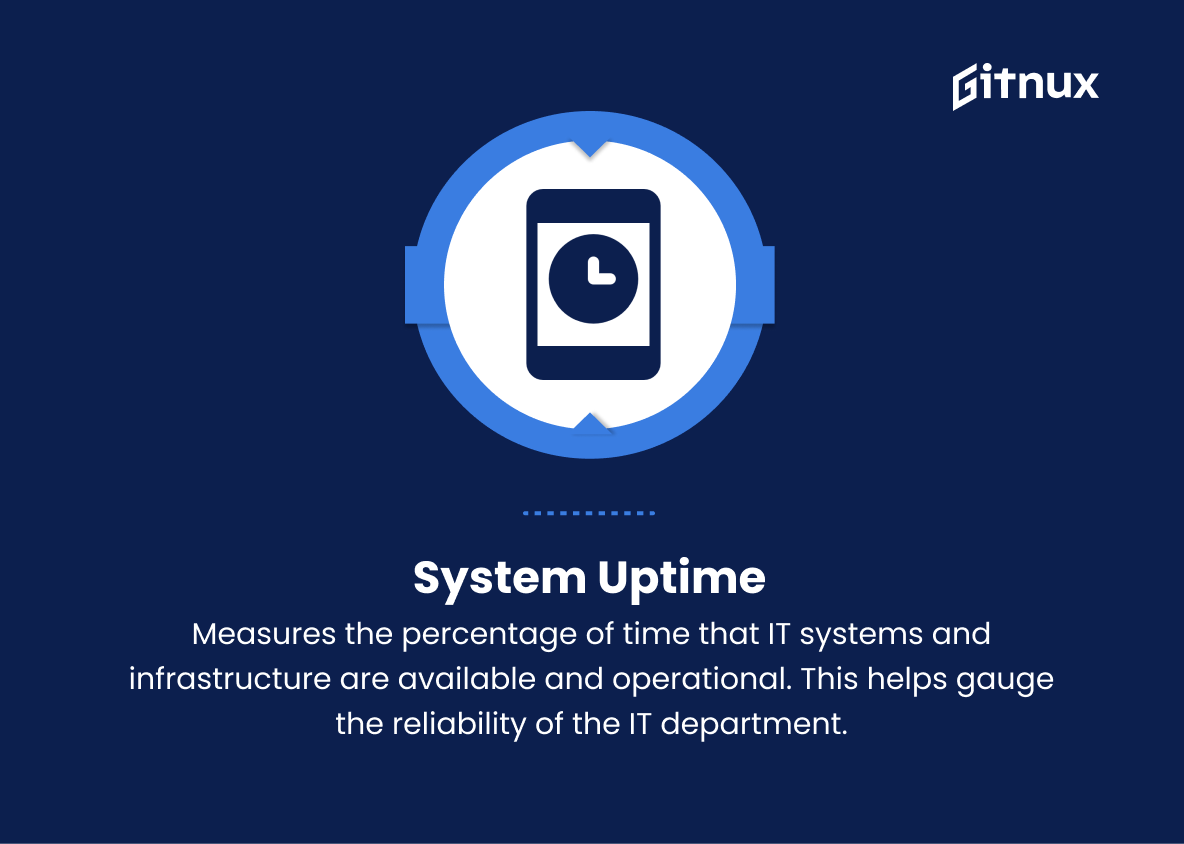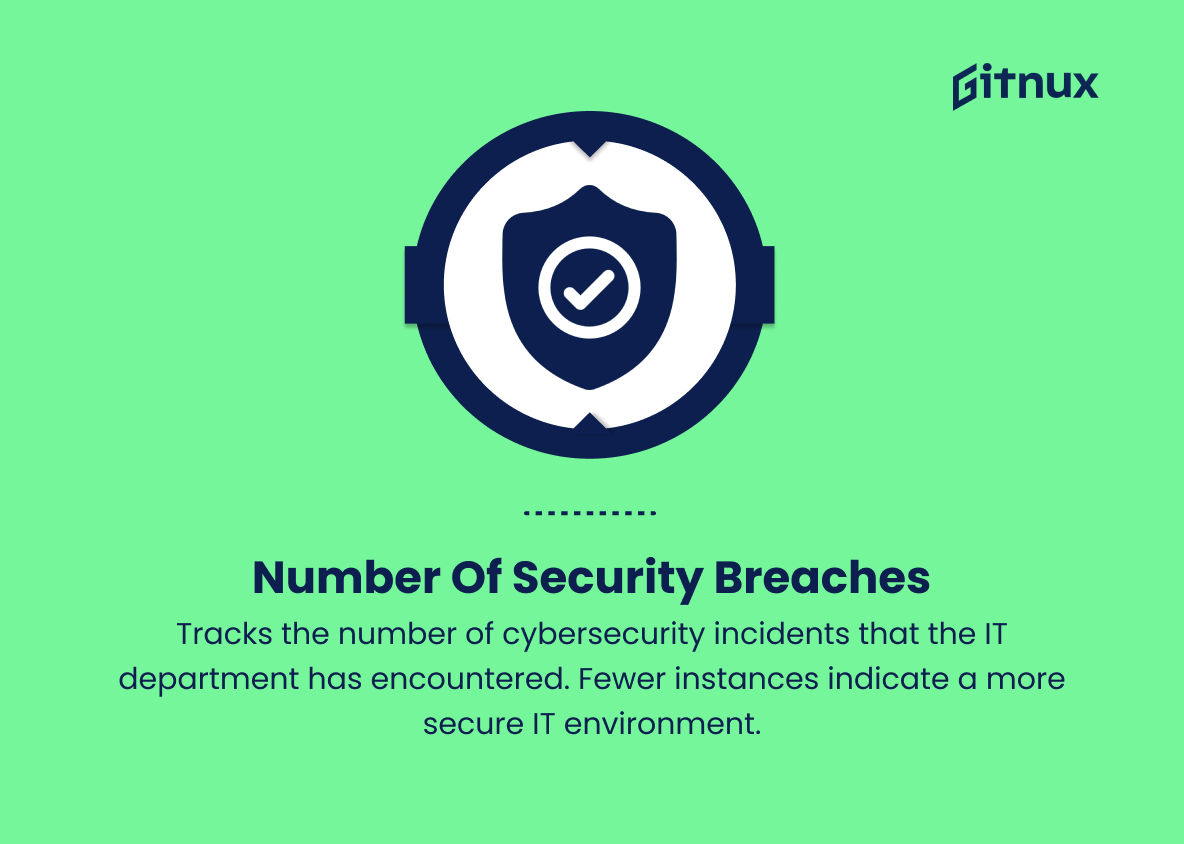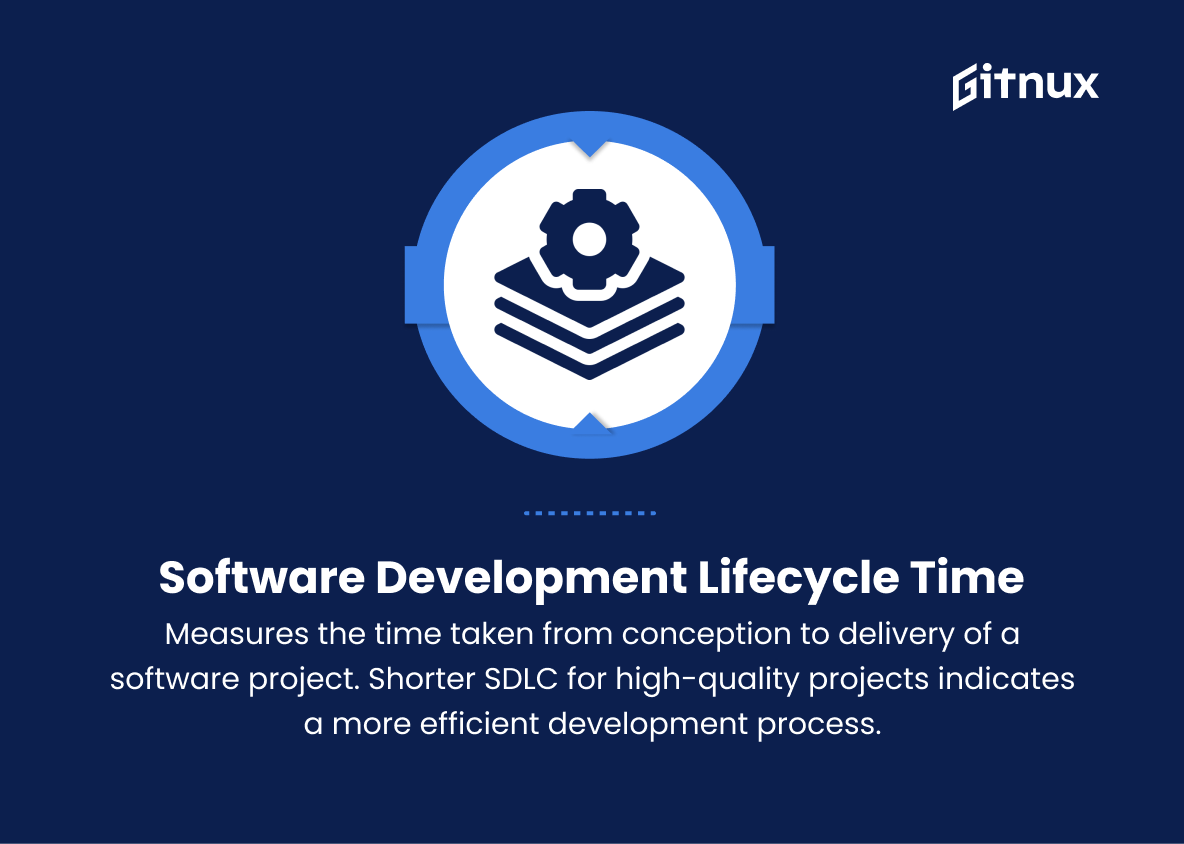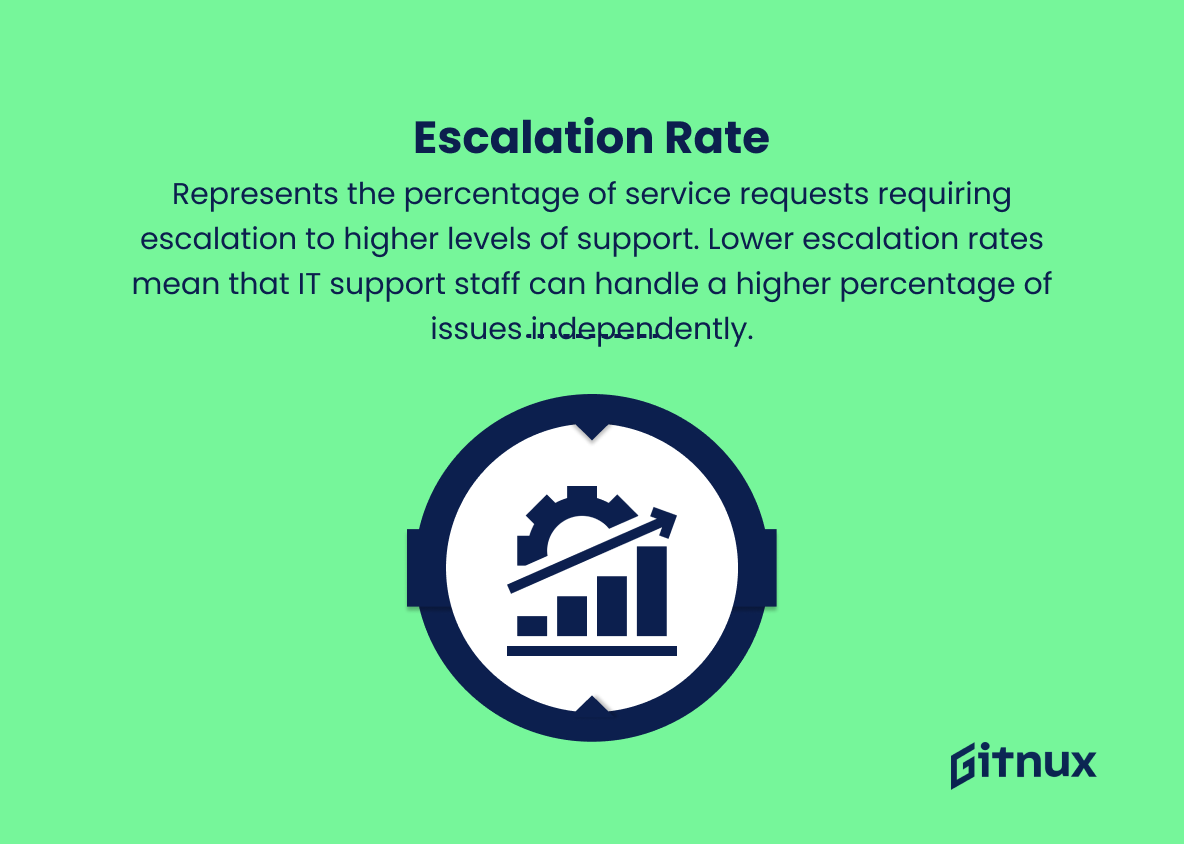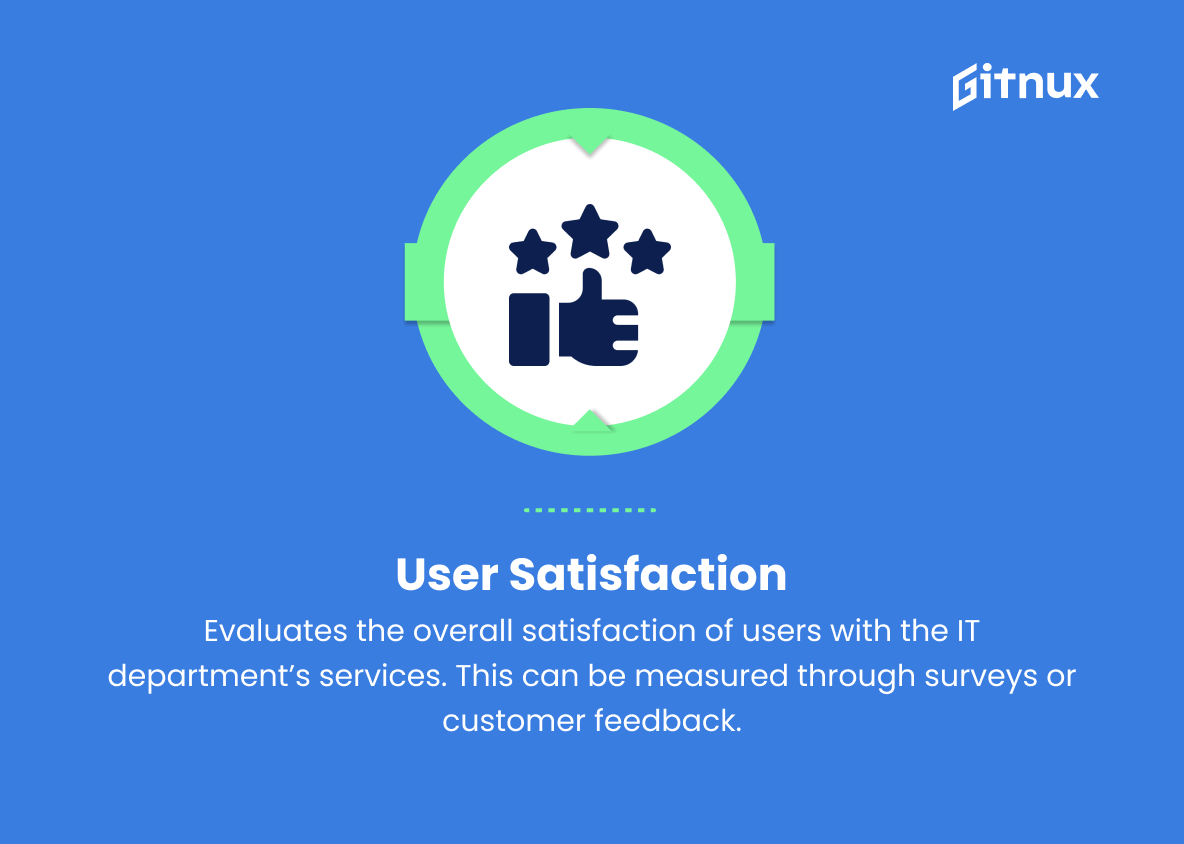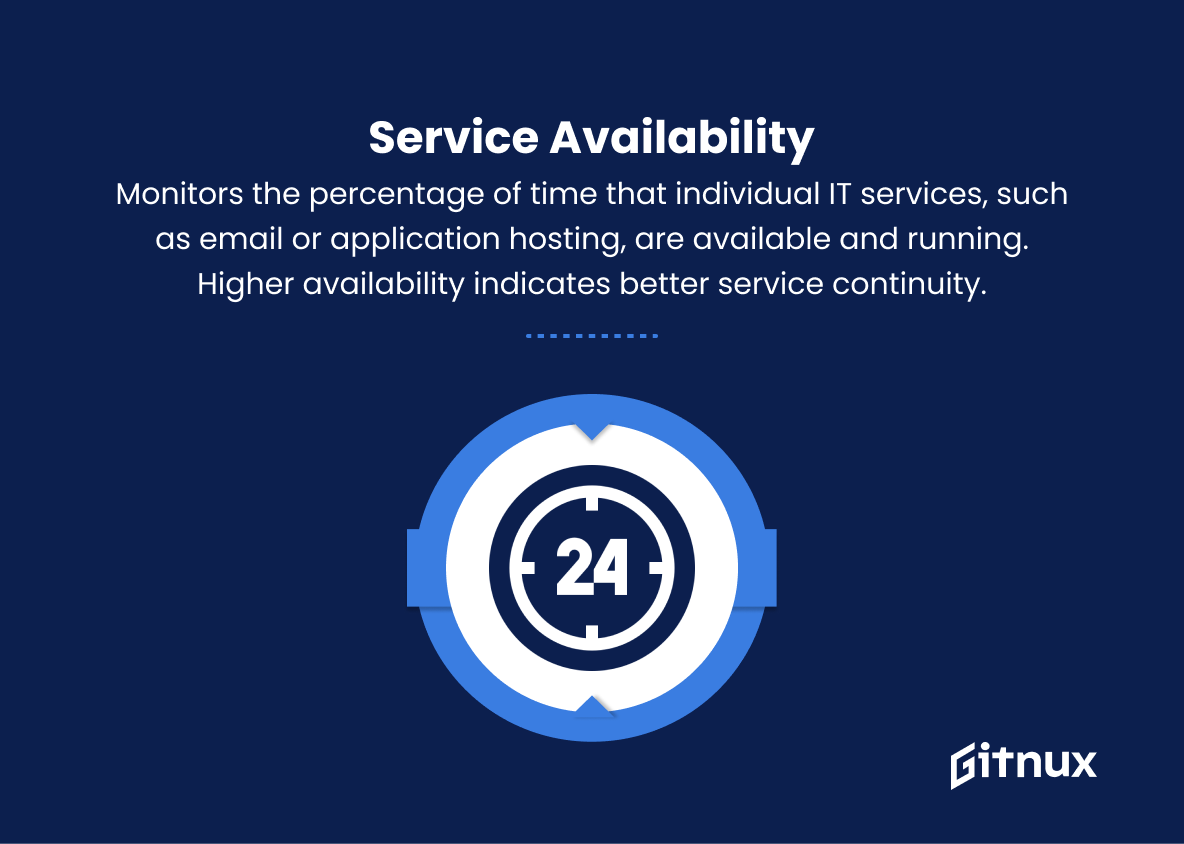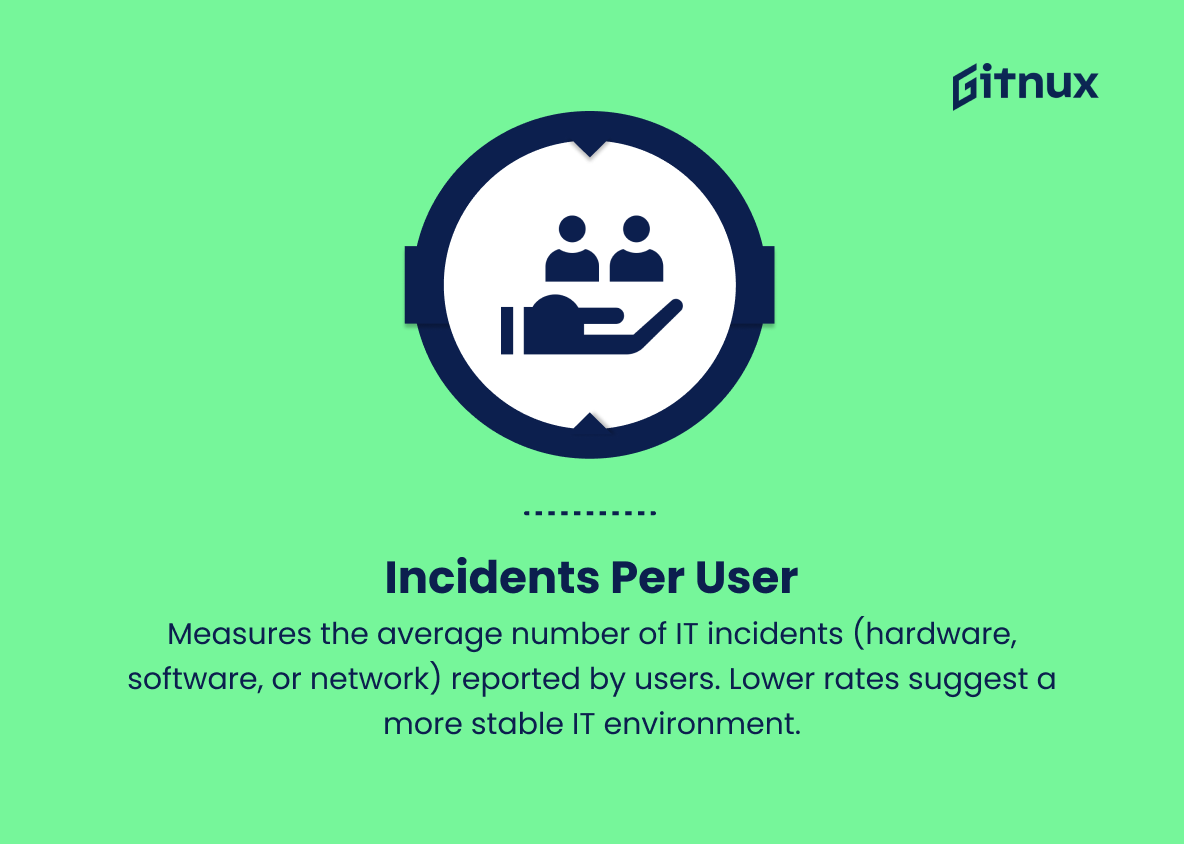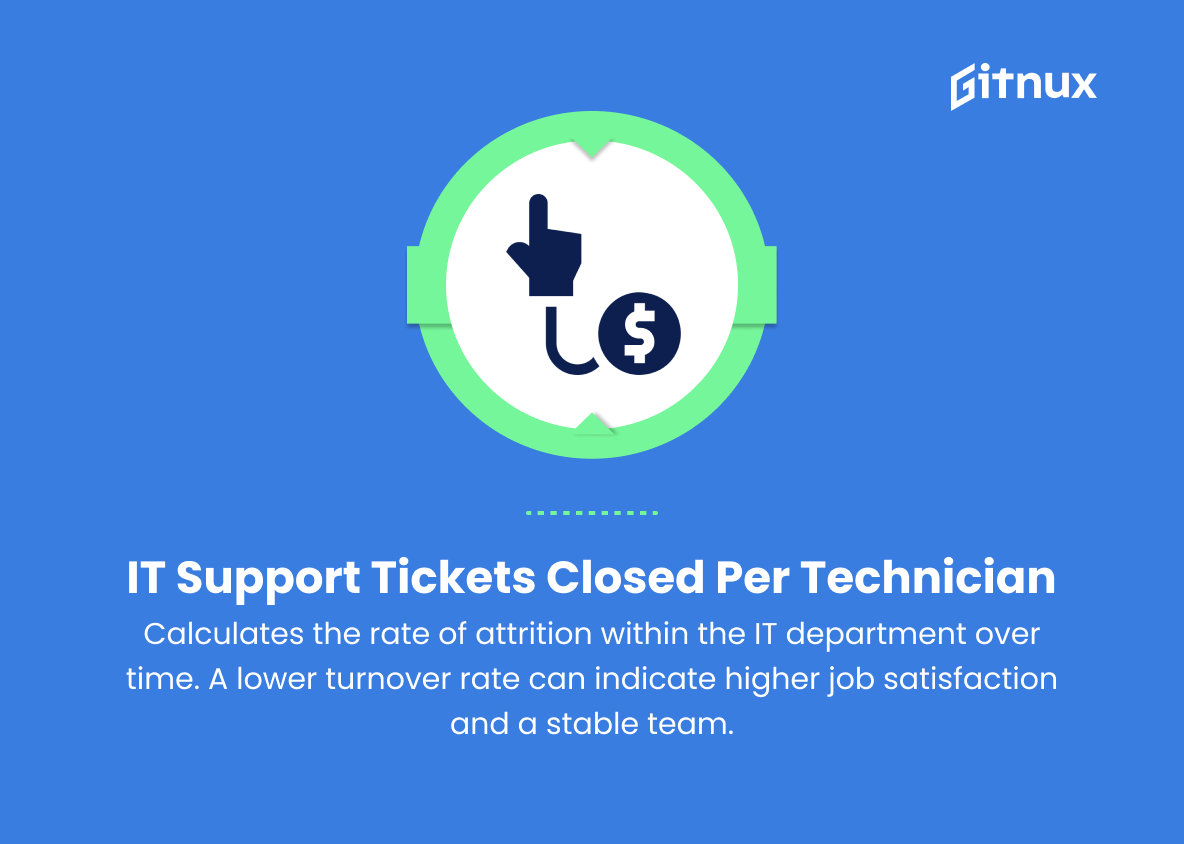In today’s fast-paced and technology-driven world, keeping a keen eye on the performance of IT departments has become more critical than ever. A reliable and efficient IT department is now an integral part of a successful organization. To monitor the overall efficiency and effectiveness of the team, Key Performance Indicators (KPIs) are an essential tool.
In this blog post, we will delve into the importance of IT department KPIs, explore the most significant and useful KPIs, and provide insight on how they can assist decision-makers in optimizing resources and identifying areas of continuous improvement. Join us as we embark on this enlightening journey to enhance your organization’s IT performance and support your strategic goals.
It Department KPIs You Should Know
1. System Uptime
Measures the percentage of time that IT systems and infrastructure are available and operational. This helps gauge the reliability of the IT department.
2. First Call Resolution
Measures the percentage of IT support issues resolved on the first attempt, without needing escalation or further assistance. Higher rates mean better customer service and effectiveness.
The importance of these IT Department KPIs cannot be understated, as they collectively provide an accurate portrayal of an IT department’s overall performance, efficiency, and customer satisfaction.3. Mean Time to Repair (MTTR)
Calculates the average time taken to diagnose and fix an IT issue. Lower MTTR indicates better efficiency in problem resolution.
4. Helpdesk Response Time
Measures the average time taken by the IT department to respond to support requests. A lower response time shows a more efficient support team.
5. Number of Security Breaches
Tracks the number of cybersecurity incidents that the IT department has encountered. Fewer instances indicate a more secure IT environment.
6. Total IT Cost
Monitors the overall cost of IT infrastructure, personnel, software, and maintenance. Helps optimize the IT budget and assess the cost-effectiveness of IT services.
7. Software Development Lifecycle (SDLC) Time
Measures the time taken from conception to delivery of a software project. Shorter SDLC for high-quality projects indicates a more efficient development process.
Other KPIs, such as escalation rate, user satisfaction, and service availability, focus on enhancing user experience and ensuring that IT services run smoothly.8. Escalation Rate
Represents the percentage of service requests requiring escalation to higher levels of support. Lower escalation rates mean that IT support staff can handle a higher percentage of issues independently.
9. User Satisfaction
Evaluates the overall satisfaction of users with the IT department’s services. This can be measured through surveys or customer feedback.
10. Service Availability
Monitors the percentage of time that individual IT services, such as email or application hosting, are available and running. Higher availability indicates better service continuity.
11. Incidents per User
Measures the average number of IT incidents (hardware, software, or network) reported by users. Lower rates suggest a more stable IT environment.
12. Training Hours per IT Staff
Tracks the average number of training hours received by IT personnel. Higher training hours indicate a commitment to continuous learning and improvement in the IT department.
13. IT Staff Turnover Rate
Calculates the rate of attrition within the IT department over time. A lower turnover rate can indicate higher job satisfaction and a stable team.
14. Percentage of Projects Completed On Time
Assesses project management efficiency by measuring the percentage of IT projects completed within their set deadlines.
15. IT Support Tickets Closed per Technician
Measures the productivity of IT support staff by tracking the number of resolved tickets per technician. The higher the number, the more efficient the technician.
By monitoring these KPIs, IT departments can effectively gauge their performance, optimize processes, and continuously improve their service quality.
It Department KPIs Explained
The importance of these IT Department KPIs cannot be understated, as they collectively provide an accurate portrayal of an IT department’s overall performance, efficiency, and customer satisfaction. By measuring system uptime, we understand the reliability and functionality of an organization’s IT infrastructure, while metrics like first call resolution, helpdesk response time, and mean time to repair indicate the effectiveness and efficiency of IT support.
Similarly, monitoring security breaches, total IT cost, and software development lifecycle time ensures cost-effectiveness, security, and project efficiency. Other KPIs, such as escalation rate, user satisfaction, and service availability, focus on enhancing user experience and ensuring that IT services run smoothly. Further inspection of incidents per user, training hours per IT staff, and staff turnover rate highlight the need for a stable and skilled workforce for optimal IT performance.
Lastly, tracking project completion rates and support tickets closed per technician enables IT departments to refine their processes, enhance productivity, and ultimately deliver exceptional service quality. In conclusion, these KPIs serve as a comprehensive toolkit for IT departments to evaluate and continuously improve their operations.
Conclusion
In conclusion, IT Department KPIs are integral to the overall success and functionality of any organization. Regularly monitoring and evaluating these indicators ensures that IT strategies and operations remain aligned with business objectives, promoting transparency and resource optimization. By establishing clear, measurable KPIs, organizations can maintain a robust and efficient IT department, ultimately fostering a culture of collaboration, innovation, and continuous improvement.
Stay ahead of the curve by consistently tracking and refining your IT Department KPIs and witness your organization reap the rewards of exemplary performance and growth.
